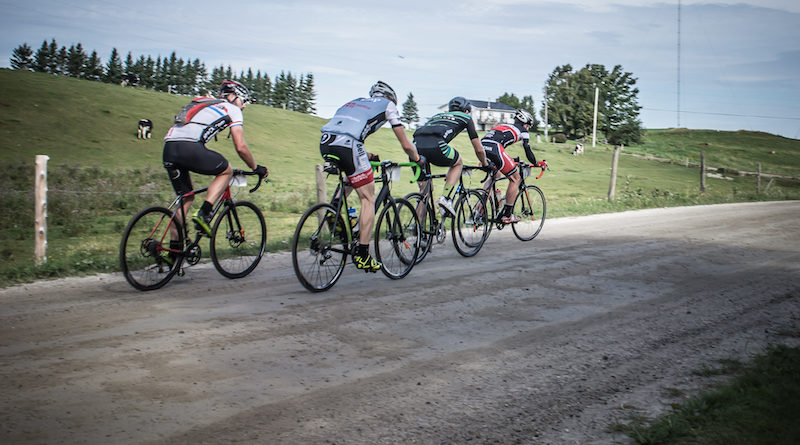Lost In Vermont
Don’t curse those dirt roads. Explore them.
There was one small sign at the four-way intersection and it was in Spanish. I don’t speak Spanish. Nor does Angelo. I squinted at the map.
“I’m pretty sure we go right here,” I said.
“I’m pretty sure we go straight,” he said.
After five minutes of arguing, we turned right, our skinny-tire road bikes whirred over the smooth pavement for about a mile, then over cobblestones of a medieval village and on a dirt road leading towards farmland. That’s when Angelo looked at me: “You sure this is the right way?”
“I’m pretty sure it will turn back to pavement soon,” I said, somewhat doubtfully. It did, but not for 10 miles, not before the road narrowed to what we might call a double track, then a single track, buried deep in shoulder-high grasses and poppies, with not a road or a car in sight.
That was the best ride of the week.
Anyone who has ever followed a route in Vermont mapped by a GPS or in a Gazetteer knows this scene well. That moment when your cell phone stops working, the road goes to Class IV, then basically becomes a trail and you’re faced with two options: pursue or backtrack.
I’m a pursuer, by nature. These moments, the times of getting completely lost on a back road, are one of the things I love the most about exploring by bike. These are the rides where I’ve come across pristine, hidden swimming holes and hill farms with views that make you suck in your breath. I’ve met old farmers who have been kind enough to drive miles out of their way to show me the right road back and others who have offered a water refill.
In Vermont, we are blessed with more miles of dirt roads than paved ones. Yet, we hardly know half of them.
With the rise of the gravel bike (essentially, a road bike with more relaxed geometry and fatter tires) and an explosion of gravel grinder races around the state, riding Vermont’s old roads and logging trails is becoming a thing. What the state’s department of transportation might consider a liability, for cyclists with 35 mm tires and a penchant for getting lost, Vermont’s network of unimproved and dirt roads is gold that’s waiting to be mined.
The fact that events such as Rasputitsa (a grueling dirt ride in the Northeast Kingdom in, yes, April) are drawing upward of 900 riders (that’s more than most century rides in the state) is testament to the growing popularity of gravel rides. On page 8, we’ve listed just 10 of our favorites.
These rides and races are one way to begin to learn new routes. Another is a simple but brilliant idea that Slate Valley Trails in Poultney has pursued. Slate Valley Trails is positioning itself as a riding destination suitable for bikes of any tire width. The group has mapped out more than 16 dirt road rides in the area, as well as mountain bike trails. What if every Vermont Mountain Biking Association or road riding group started to do that? As road bikes and mountain bikes get closer to each other, why keep these groups separate?
While it’s easy to stick to your favorite loops, as John Atkinson points out in “The Vision for Velomont,” “People don’t just want to ride circles, they want to go from point A to point B.” Already, mountain bikers are exploring routes that link Vermont’s various mountain bike trail networks and setting out to create a trail, Velomont, that would connect them.
We returned from our trip to Spain to some of the most glorious June weather I can remember. The fields were a brilliant green, the roads were dry and quiet and bugs were remarkably inactive. Gazing at a map and picking out a few thin lines that looked like roads, I turned to Angelo. “Hey, next year, we don’t have to go to Barcelona to get lost. We can do it right here.” —Lisa Lynn, Editor
Photo courtesy Rasputitsa.



Pingback: Vermont Sports Magazine, July 2018 - Vermont Sports Magazine